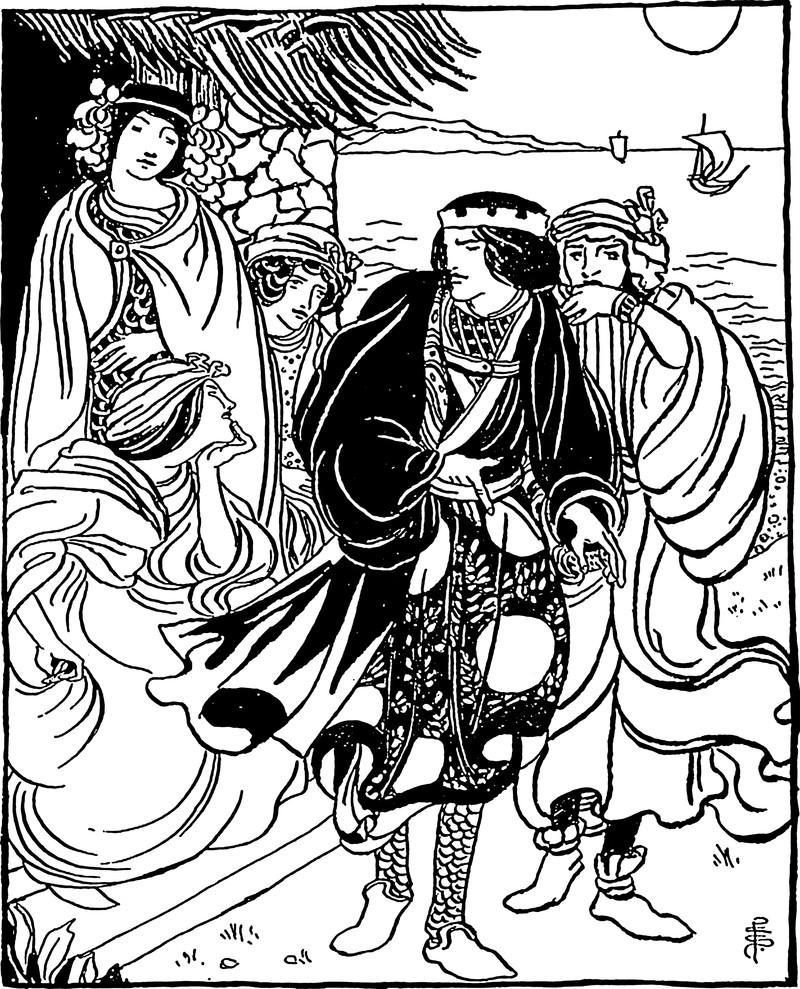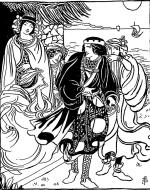Created by Justin Hovey on Wed, 10/21/2020 - 20:36
Description:
This illustration from Pamela Colman Smith's Annancy Stories (1899) is representative of the modern style she uses throughout the book and her work at large. It contains traces of the aesthetic principles of her instructor at the Pratt Institute, Arthur Wesley Dow, in particular and of the contemporary art movements he was associated with, Art Nouveau and aestheticism, in general. An early modernist, Dow held that it was not the artist's job to imitate nature realistically, but rather to produce beauty through the formal elements of the medium at hand. Namely, Dow stressed the production of "harmony" in a work of art through simplicity of line and the balance of light and dark. Both of these tenets are on display in this Colman-Smith illustration: she employs a very minimalistic, two-dimensional style, most obvious in the background landscape consisting of only a handful of lines. With regard to colour, the black and white print medium Colman-Smith is working with spotlights her adoption of Dow's emphasis on a light-dark balance -- the two extremes, jet-black and negative space, are starkly contrasted with each other, each serving to clearly represent resepctive sides of dichotomies Colman-Smith intends to convey (e.g., indoors vs. outdoors; nobility vs. commonalty). This balance of light and dark is representative of Art Nouveau aesthetics, particularly the influence Japanese art had on the movement ("notan" is a concept is Japanese art referring to the juxtaposition of black and white on a two-dimensional space). This, in addition to the asymmetry that characterizes the illustration, is reminiscent of the work of other Art Nouveau and aestheticist figures, such as Aubrey Beardsley and Eugene Grasset. The influence these movements had on Colman-Smith would go on to be exhibited in her later work.


